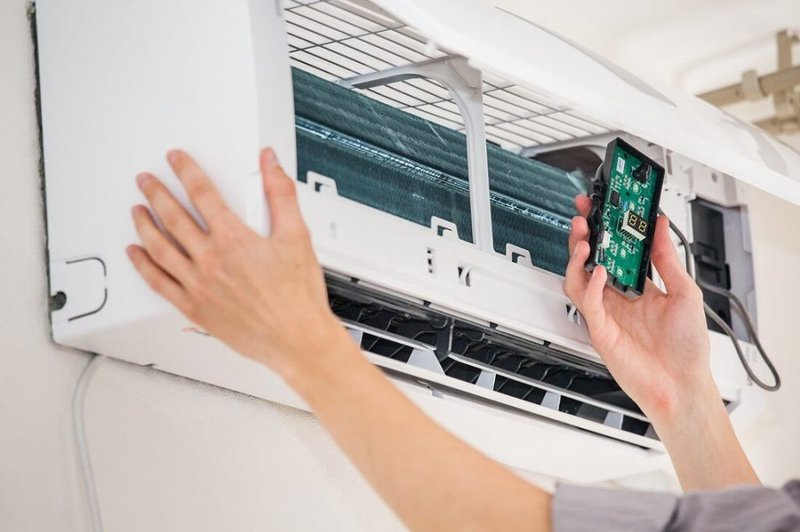
Imagine your air conditioner as a finely tuned orchestra. Each part has its own role to play, ensuring a harmonious performance of cool air. But when one instrument goes out of tune—like a problematic error code—it can throw the whole symphony off balance. In the case of the “OE” error code, it’s like your air conditioner is trying to tell you, “Hey, something’s up, and I need attention!” Now, let’s dive into what might be causing this little hiccup.
Understanding the “OE” Error Code
Before we jump into troubleshooting, let’s first understand what this mysterious “OE” code means. In simple terms, the “OE” error code on your Honeywell air conditioner indicates an issue with the unit’s drainage system. Think of it like a clogged sink—when the drain is blocked, water doesn’t flow out as it should, causing a backup. Similarly, an air conditioner might display the “OE” code when it struggles to drain excess moisture, which can lead to ineffective cooling or even water leakage.
So, what exactly happens? Your air conditioner is designed to extract moisture from the air as it cools your space. This moisture, or condensate, is supposed to flow out via a dedicated drainage system. When this process is interrupted, the system signals an error, much like a warning light on your car dashboard. Without addressing it, you may notice that the room doesn’t cool down properly, or you might find water pooling around the unit—a clear sign that something’s not right.
Now, don’t let this alarm you. Understanding the problem is the first step to solving it, and luckily, you don’t need a degree in HVAC systems to tackle this. With a little patience and the right guidance, you’ll be able to troubleshoot and potentially resolve this issue yourself.
Potential Causes for the “OE” Error Code
Let’s explore some common causes behind this pesky error code. The most frequent culprit is a blocked or clogged drain pipe. Imagine trying to drink through a straw that’s clogged—it’s nearly impossible, right? Similarly, when the drain pipe is obstructed, water backs up, triggering that unwelcome error code. Dust, dirt, or even mold could be the reason for the blockage, disrupting the smooth flow of condensate.
Another usual suspect is a faulty drain pump. This component works like a small elevator for water, lifting it from the unit and sending it on its merry way down the drain. If the pump is defective or if the wiring is loose, the water has nowhere to go, resulting in the “OE” code. Think of it like a broken escalator—you could technically still walk, but it’s not functioning as expected.
Lastly, sometimes the error can be caused by the way your air conditioner is installed. If the unit isn’t level, water might not flow properly through the drainage system. It’s like trying to roll a ball uphill—without a proper slope, it just won’t move. Ensuring your unit is properly installed can prevent a host of problems, including drainage issues.
Fixing and Preventing the “OE” Error Code
So, you’ve identified what might be causing the error, now what? First, let’s tackle that blocked drain pipe. You could start by inspecting the pipe for any visible dirt or debris. If you spot anything, a gentle cleaning with a soft brush or a blast of compressed air can do wonders. Consider it like giving your air conditioner a little spa treatment.
If the drain pump seems to be the issue, it might be time to consult a professional, especially if you’re not comfortable with technical repairs. Just like calling in a mechanic for your car, a trained HVAC technician can safely replace or repair a faulty pump, restoring your unit’s function.
To prevent future occurrences of the “OE” error code, regular maintenance is key. Cleaning the filters, checking the drain line, and making sure the unit is properly leveled can go a long way. It’s like taking your car in for regular oil changes—the more you maintain it, the longer it runs smoothly. Implementing these simple habits can keep your air conditioner running efficiently, sparing you from unexpected disruptions.
Next Steps and Helpful Tips
If you’re still seeing the “OE” error after trying these steps, it might be a sign of a more complex issue requiring professional attention. At this point, reaching out to Honeywell’s customer service or a trusted HVAC technician is a smart move. Remember, it’s all about knowing when to DIY and when to call in the pros.
Also, consider keeping a maintenance log for your air conditioner. Note down the date of the last cleaning, any issues you’ve encountered, and what solutions were tried. It’s like keeping a diary for your unit—helpful to have for future reference.
In the end, understanding error codes like “OE” isn’t just about fixing a problem; it’s about ensuring your air conditioner remains the reliable hero that keeps you cool and comfortable. With a pinch of knowledge and a dash of action, you can keep those pesky error codes at bay and enjoy a breezy summer without the hassle.